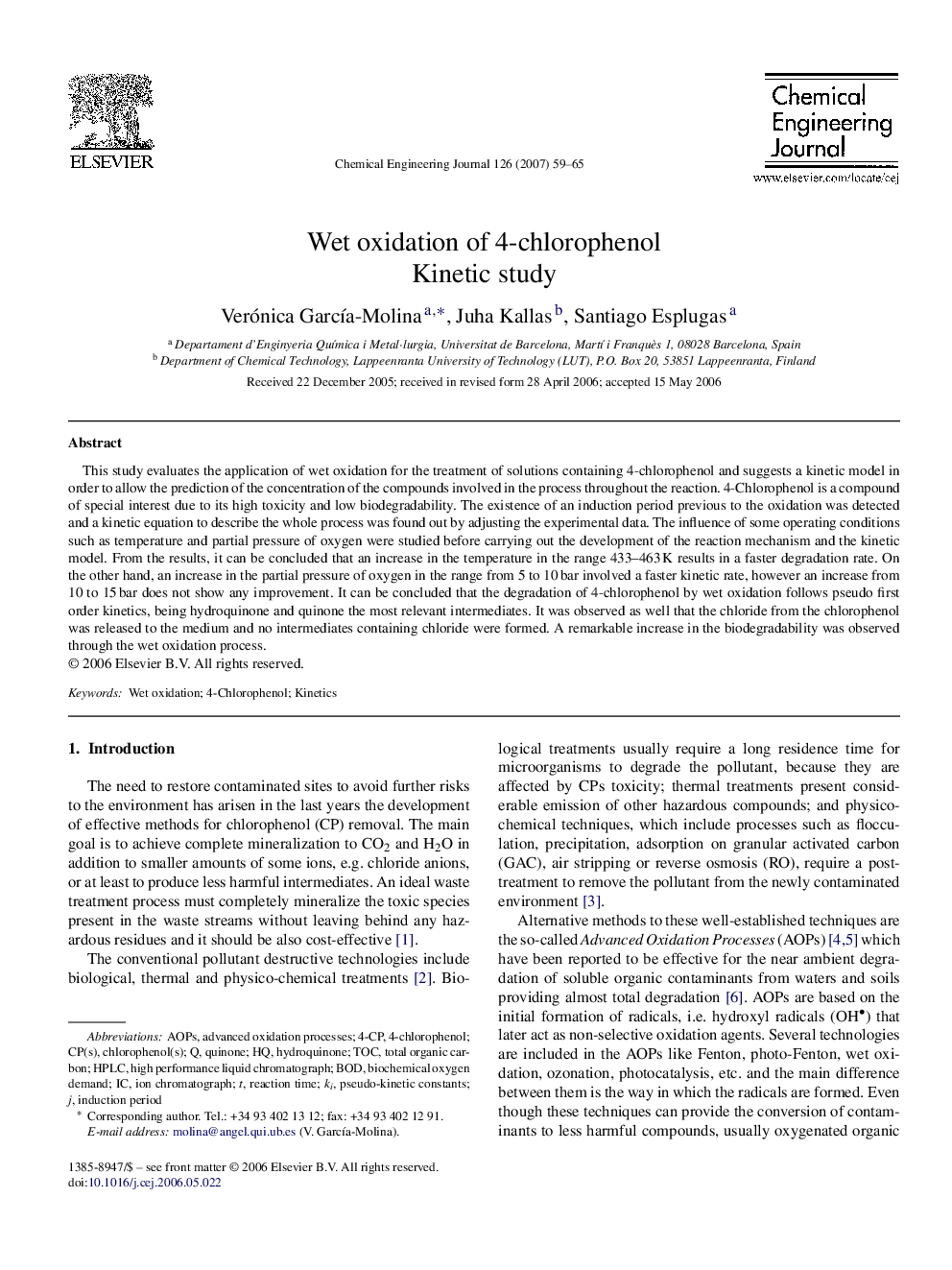| Article ID | Journal | Published Year | Pages | File Type |
|---|---|---|---|---|
| 153800 | Chemical Engineering Journal | 2007 | 7 Pages |
This study evaluates the application of wet oxidation for the treatment of solutions containing 4-chlorophenol and suggests a kinetic model in order to allow the prediction of the concentration of the compounds involved in the process throughout the reaction. 4-Chlorophenol is a compound of special interest due to its high toxicity and low biodegradability. The existence of an induction period previous to the oxidation was detected and a kinetic equation to describe the whole process was found out by adjusting the experimental data. The influence of some operating conditions such as temperature and partial pressure of oxygen were studied before carrying out the development of the reaction mechanism and the kinetic model. From the results, it can be concluded that an increase in the temperature in the range 433–463 K results in a faster degradation rate. On the other hand, an increase in the partial pressure of oxygen in the range from 5 to 10 bar involved a faster kinetic rate, however an increase from 10 to 15 bar does not show any improvement. It can be concluded that the degradation of 4-chlorophenol by wet oxidation follows pseudo first order kinetics, being hydroquinone and quinone the most relevant intermediates. It was observed as well that the chloride from the chlorophenol was released to the medium and no intermediates containing chloride were formed. A remarkable increase in the biodegradability was observed through the wet oxidation process.
